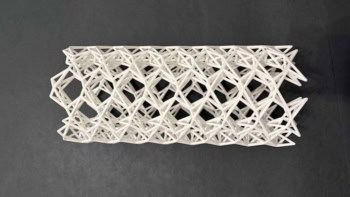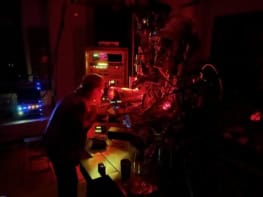
Transformation optics has already had a huge impact on the design of cloaking devices that can make objects appear invisible. The technique lets us relate the solution of two, in principle, very different electromagnetic problems by defining a relation between the sets of coordinates of the problems. Now reporting in Science, John Pendry’s group has shown that a whole spatial dimension can be transformed into a set of singular points while maintaining the original response of the system.
Pendry and his group showed that a simple grating with sharp edges can exactly reproduce the response of an infinite periodically layered metal-dielectric stack. This result means that the continuum of modes of the 3D structure are directly mapped into the 2D metasurface. When these modes are excited by a plane wave, the energy is directed by the surface to these singular points where the sharp edge confines the energy, which is converted into heat. By doing this, the amplitude of the reflected wave is reduced, making the object less visible for the observer. The importance of the band-width of operation is that the object will remain dark even when illuminated with white light, in contrast to previous designs which would reflect several colours of the spectrum.
The coordinate transformations in transformation optics are generally introduced into Maxwell’s equations as a change in the material parameters. However, this effect on the materials can be avoided using the so-called conformal transformations (which are those that conserve angles at every point of space). The development of these techniques had a huge impact on the design of the first cloaking devices.
From transformation optics to broadband single-layer absorbers
The authors go even further and propose a flat absorber based on the principle they lay out. Thanks to the properties of graphene, one can precisely control the conductivity by attracting electrons to certain regions of the surface, simply using electrodes. This change in conductivity makes the layer behave as a grating, which can be designed to present singular points (at which the conductivity is set to zero). The simulated results show an absorption level around 50% with a bandwidth of more than 10 THz, even in the presence of losses. This is due to the fact that the mode on the surface contains components of a continuum of wavelengths, and can be therefore excited by any wave within that spectrum. We now just need to wait for someone to verify this experimentally, would you like to try?



